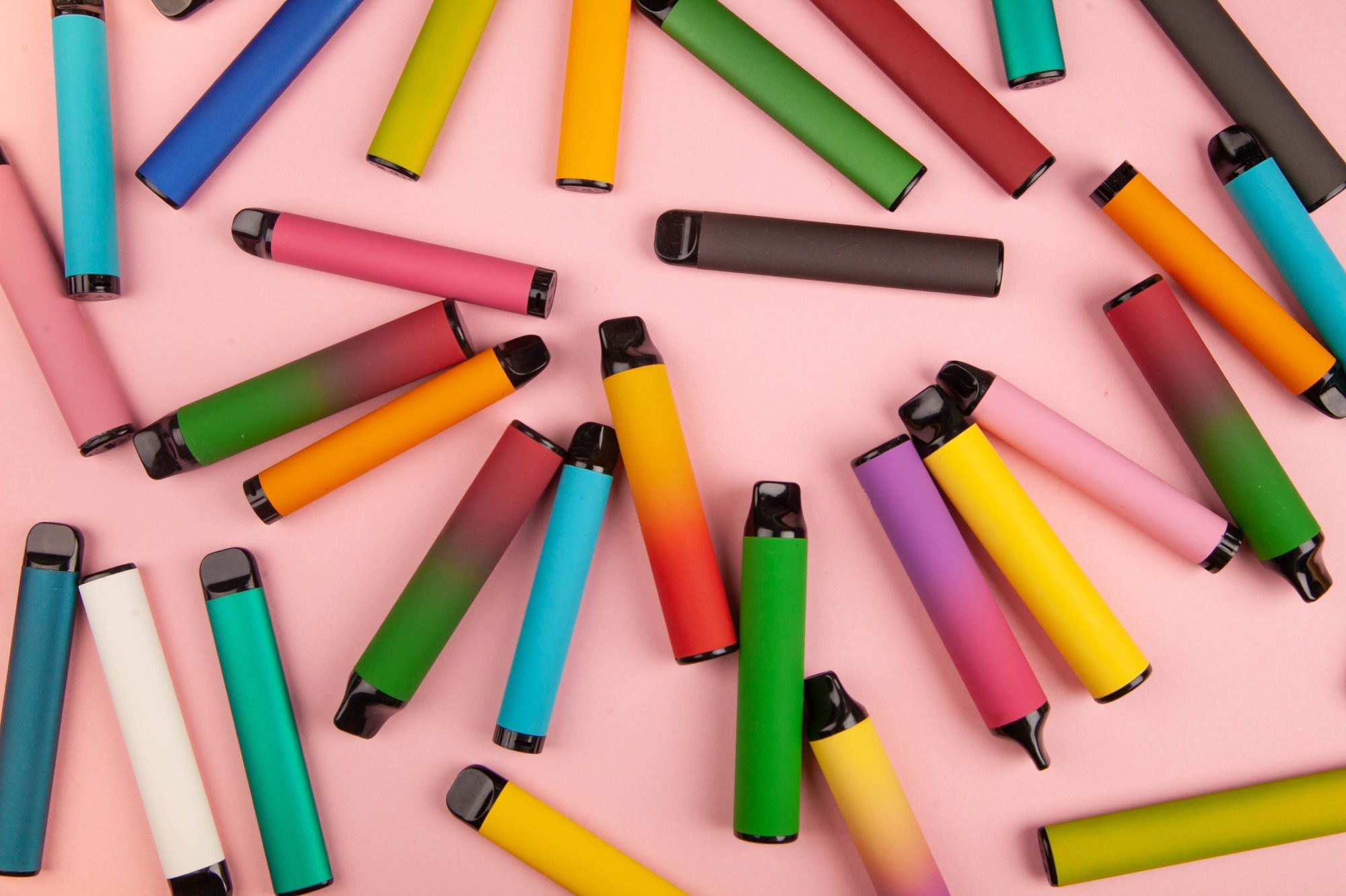The allure of vape packaging
Vape marketing tactics
Health impact of vaping
The need for regulatory measures
References
Further reading
The allure of vape packaging
Packaging is an important process in marketing that is required for proper transportation, storage, as well as promotion of any commercial products. Vibrant and appealing packaging is a marketing strategy to draw consumers’ attention to the products.
 Image Credit: Master_foto/Shutterstock.com
Image Credit: Master_foto/Shutterstock.com
Vape marketing tactics
Packaging holds a significant position in promoting vaping products, including devices, pods, and e-liquids. Candy- or fruit-flavored vaping products sold in colorful packaging are known to attract the youth attention more than adult smokers. Moreover, packaging of such products is often designed to resemble food or drink products that are mostly marketed to the youth.
Approximately 7,700 flavors are currently being used in e-liquids, with tobacco, mint, coffee, and fruits being the most commonly used flavors. In addition, candy flavors, such as bubble gums, unique flavors, such as Belgium Waffle, and alcoholic drink flavors are frequently used in vaping packaging.
A growing-pool of evidence indicates that the current state of promotion of vaping products can potentially encourage young populations and non-smokers to start vaping. A large proportion of young people perceive that vaping marketing is directed towards them, justifying the higher impact of vaping promotion on youth.
Flavors are used in vaping products to mask the harshness and smell of tobacco, which in turn can facilitate nicotine consumption and stimulate smoking behaviors, especially among young people. In this context, evidence indicates that more than 80% of young people use vaping products because of their fondness for the flavors used. Nicotine addiction developed during vaping can potentially encourage young people to start using conventional tobacco products.
Current vaping devices are capable of heating e-liquids at higher temperatures as they contain larger batteries. Such high-temperature heating is associated with release of more nicotine and formation of more toxic substances and clouds of particulate matter. In the current generation vaping devices, there is a provision for self-customization, which is also concerning as users often customize their devices to inhale illicit drugs other than nicotine.
Health impact of vaping
Electronic-cigarettes or E-cigarettes were initially introduced in the global market with the aim of reducing nicotine addiction of conventional cigarette smokers. E-cigarettes allow users to inhale aerosols that usually contain nicotine, flavoring agents, and other additives. Although e-cigarette users consume lesser amount of tar and carbon monoxide than conventional cigarette smokers, it should be noted with high priority that e-cigarettes have adverse health impact due to the presence of nicotine. Notably, the US Food and Drug Administration (FDA) does not recognize e-cigarettes as a smoking cessation tool.
According to the recent Surgeon General’s report, usage of e-cigarettes has increased significantly among adolescents and young adults. Moreover, vaping practices are strongly associated with the use of other tobacco products, such as combustible tobacco, among youth.
Considering the ever-increasing popularity of e-cigarettes, many studies have been conducted to investigate the impact of vaping on human health. The findings of these studies indicate that vaping experience at younger age can significantly increase nicotine addiction among youth, which in turn can affect their brain development.
In February 2020, the US Centers of Disease Control and Prevention (CDC) has identified 2,807 cases of severe lung injury and 68 deaths associated with vaping. The majority of these cases are associated with the use of modified vaping devices or black marker-modified e-liquids. CDC researchers suspect that the thickening agent vitamin E acetate used in tetrahydrocannabinol- containing e-cigarettes may primarily be responsible for vaping-related severe lung injury.
Nicotine is the primary ingredient in both conventional cigarettes and e-cigarettes. This toxic chemical is known to increase blood pressure and cause adrenaline surge, which subsequently increases heart rate and risk of heart attack. Emerging evidence indicates that long-term use of nicotine can cause chronic lung disease and asthma and that a combination of vaping and smoking can potentially increase the risk of cardiovascular disease.
Diacetyl is a flavoring agent found in many vaping products. This chemical is known to cause bronchiolitis obliterans, which is an inflammatory lung disease characterized by wheezing, coughing, and breathlessness. Other harmful substances found in vaping products include ultrafine particles, volatile organic compounds, carcinogens, and heavy metals (nickel, tin, and lead).
Smokefree ‘Health Harms’ – Impact of smoking vs vaping demonstration
The need for regulatory measures
A global induction in vaping practice among youth is believed to be associated with some misconceptions. Teenagers tend to believe that vaping is less harmful than conventional smoking. Moreover, the absence of smell in e-cigarettes reduces some of the smoking stigma for them. Another potential reason is lower per-use cost of e-cigarettes than conventional cigarettes.
To reduce the vaping appeal triggered by vape marketing tactics, many countries have adopted standardized vape packaging in dark olive-green color with mandatory health warnings. Standardized vaping product packaging has been found to reduce vape appeal among youth in England, Canada, and the USA. It is generally believed that young people perceive lighter-colored packaging as less harmful than dark-colored packaging.
Researchers have recently conducted a large-scale study on 2,469 teenagers aged 11-18 years and 12,026 adults aged 18 years and above to investigate the impact of vaping product packaging on vape appeal. By showing the participants fully branded packaging, standardized white packaging with brand name, and standardized olive-green packaging with brand name, they have found that standardized packing significantly reduces vape appeal among teenagers; however, it has no such impact on adults.
Considering the findings, researchers suggest that policy makers should consider removing brand imagery from the vaping product packs in order to prevent teenagers’ temptation to take up vaping in the first place.
References
Further Reading
Last Updated: Oct 31, 2023